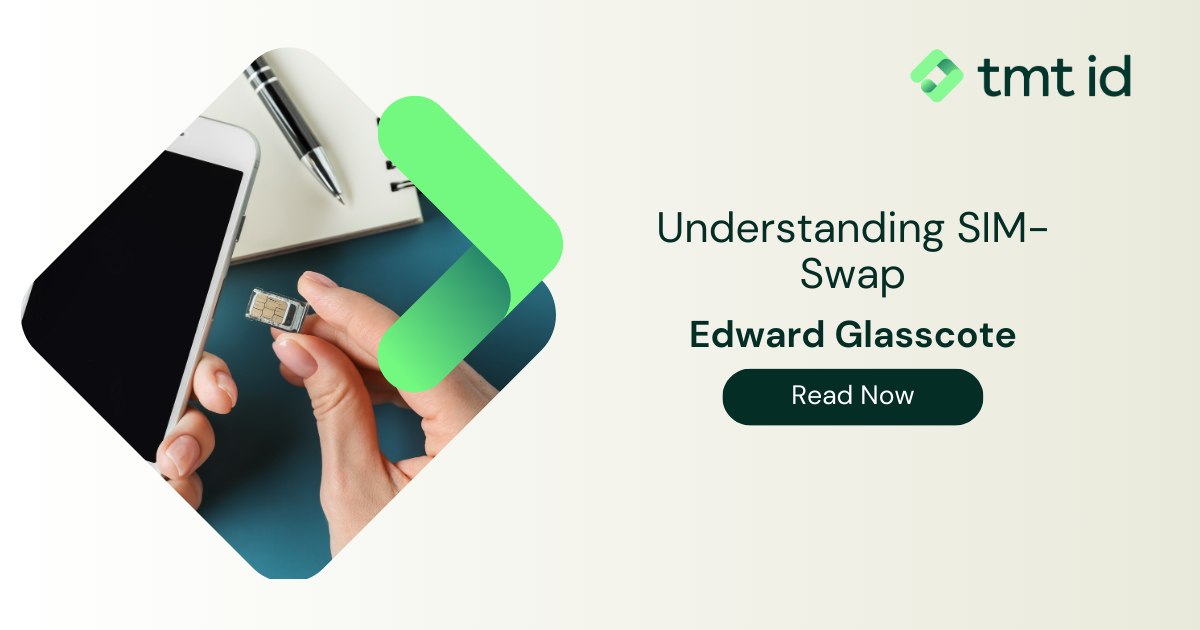
Two-factor authentication (2FA) has long been considered a critical layer of security in digital identity verification. By requiring a second authentication factor, such as a one-time password (OTP) sent via SMS, businesses aim to strengthen login security and prevent unauthorised access. However, as fraud tactics evolve, traditional 2FA solutions are proving increasingly ineffective against modern cyber threats.
Fraudsters have developed sophisticated attack methods to bypass 2FA protections, rendering SMS-based authentication obsolete in many high-risk industries like fintech, banking, and e-commerce.
As businesses seek 2FA alternatives, they must understand the vulnerabilities of traditional authentication and explore more secure solutions.
One of the most significant weaknesses of SMS-based one-time passwords (OTPs) is their susceptibility to SIM swap fraud. Fraudsters can manipulate telecom carriers to transfer a victim’s phone number to a new SIM card, allowing them to intercept all OTP messages. This enables account takeovers (ATO) and unauthorised transactions, especially in banking and crypto platforms.
Modern phishing kits are designed to steal OTPs in real-time, making SMS-based 2FA easy to exploit. Fraudsters create fake login pages that:
Malware-based fraud attacks have become increasingly common, with hackers deploying sophisticated tools to extract session cookies from infected devices. This allows attackers to:
Many businesses have adopted push-based 2FA tools to replace SMS OTPs. However, fraudsters exploit push notification fatigue by sending multiple login prompts in rapid succession, a technique known as “prompt bombing” or MFA fatigue attacks. Users overwhelmed by notifications often approve fraudulent logins by mistake.
Even with multi-factor authentication, traditional password-based security remains a liability. Users frequently:
As AI-driven fraud attacks become more sophisticated, businesses need real-time risk assessment solutions that go beyond static authentication factors. Mobile number intelligence, for example, offers:
Regulations like PSD2’s Strong Customer Authentication (SCA) requirements are pushing businesses to move beyond outdated 2FA models. Compliance with evolving fraud prevention laws requires companies to implement stronger identity verification measures that adapt to emerging threats.
For years, businesses have relied on SMS-based one-time passwords (OTPs) for identity verification, but as fraud tactics evolve, these authentication methods have become a major security risk.
Authenticate provides a more secure and frictionless authentication alternative by leveraging silent mobile verification and real-time network intelligence to verify identities without requiring user action.
By removing SMS OTP reliance, businesses can reduce fraud risks while improving the customer experience.
Unlike traditional phone number verification methods that rely on static OTPs, Authenticate uses real-time network intelligence to verify a user’s identity. This silent verification process analyses:
This ensures that only legitimate users gain access, without requiring them to enter an OTP manually.
One of the biggest challenges in traditional authentication is user friction. Authenticate eliminates the need for OTPs, passwords, or manual user input:
With passwordless mobile verification, businesses can increase conversions and reduce authentication drop-off rates.
SIM swap fraud is one of the biggest threats in modern digital security. Fraudsters take over a user’s phone number by transferring it to a new SIM card, allowing them to intercept OTPs and reset accounts. Authenticate proactively detects SIM swaps before authentication occurs by:
Traditional OTP-based authentication is highly vulnerable to phishing attacks, where fraudsters trick users into entering their OTPs into fake login pages. Authenticate eliminates this risk by:
This makes it one of the most secure online identity verification methods available today.
Passwords remain one of the weakest links in security. Users often make some fundamental mistakes with their password choices:
Authenticate eliminates password vulnerabilities by relying on mobile identity verification, ensuring that only the legitimate device and network can complete the authentication process.

User friction is a major concern in digital onboarding and authentication workflows. Every additional verification step increases the chance of customer drop-off, which can lead to lost revenue.
With Authenticate’s silent verification process, authentication happens passively in the background, without:
This makes it an ideal passwordless verification solution for businesses that prioritise both security and usability.
A common issue with OTP-based 2FA is that users:
By removing OTPs entirely, Authenticate provides a frictionless experience, ensuring that users complete authentication faster and with fewer issues.
With the rise of Strong Customer Authentication (SCA) regulations, such as PSD2 in Europe, businesses are required to implement stronger authentication measures. Authenticate helps companies stay compliant by offering:
This is particularly critical for banking and eCommerce platforms that must adhere to strict authentication requirements.
One of the biggest weaknesses of traditional phone number verification is the risk of OTP interception. Authenticate eliminates this risk entirely by:
This protects against SIM swap fraud, phishing, and malware attacks.
By adopting Authenticate, businesses can improve security, reduce fraud risks, and enhance the customer authentication experience, without relying on outdated OTP-based verification. If you’d like to learn more about how frictionless authentication can help your business, talk to an expert today!
Last updated on August 5, 2025



Mobile customer verification by Authenticate securely links the mobile device that you are communicating with to the number’s live status, reducing fraud and friction during login
Learn about AuthenticateWe provide the most comprehensive device, network and mobile numbering data available
Contact us > Chat to an expert >